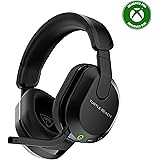Why Your Gaming Headset Might Be Holding You Back: A Deep Dive into Superior Audio for Gaming
Are you serious about your gaming experience, especially when it comes to audio immersion and competitive edge? If you’re currently relying on a traditional gaming headset, you might be surprised to learn that it could be a significant bottleneck in your setup. The accompanying video offers a compelling argument against the default choice for many gamers, especially when considering the sound quality and versatility often sacrificed for convenience. Let’s delve deeper into why a dedicated audio setup might be the ultimate upgrade your gaming deserves, providing insights that go beyond what you might expect from common peripherals.
Beyond the Hype: Unpacking Gaming Headset Audio Fidelity
Many gamers, particularly those spending around $200 on a gaming headset, often believe they are investing in top-tier audio. However, the reality often falls short. While it’s incredibly convenient to simply don a headset and drop the mic, most gaming headsets—especially in the low to mid-range—struggle to deliver truly exceptional sound quality. This isn’t just about general clarity; it significantly impacts critical aspects like directional audio.
In competitive shooters, for instance, discerning whether an enemy approaches from the precise left or right is crucial. While a gaming headset might indicate a general direction, it often lacks the pinpoint accuracy and spatial detail found in a quality pair of dedicated headphones. Even at the higher end, spending a substantial sum on a gaming headset can feel like a gamble; the difference in directional audio performance between a premium gaming headset and even a mid-range one can sometimes be negligible, leaving much to be desired in terms of true audio fidelity. This is due to limitations in driver technology and overall acoustic design, where dedicated headphones often excel by focusing solely on audio reproduction.
The Illusion of ‘Tuned for Gaming’: EQ Presets and Sound Profiles
You might notice professional esports players using headsets from major brands like Razer, Logitech, and HyperX. It’s important to understand, however, that these teams are frequently sponsored. Their gear choices are often driven by marketing partnerships aimed at visibility, not necessarily optimal performance in every scenario. Furthermore, these “gaming” headsets are frequently tuned to specific games, which can be a double-edged sword.
A headset optimized for a title like Counter-Strike 2, emphasizing harsh treble for footsteps, might sound hollow and unpleasant when experiencing the rich, diverse soundscapes of games like Marvel Rivals or story-driven adventures. Modern games feature an expansive array of sounds: booming explosions, intricate dialogue, immersive background music, and unsettling diegetic sounds in horror titles. The claim of “built-in equalizer presets for different genres” often falls flat, with many sounding poorly implemented and generic, offering little real improvement. True audio quality demands a more balanced and nuanced approach to sound reproduction than what these presets typically provide, which often merely boost certain frequencies without considering the overall soundstage or imaging.
The Latency Labyrinth: Wireless Gaming Headsets and Performance
The primary advantage gaming headsets offer, especially wireless models, is their prioritization of low latency. This is undeniably crucial for competitive play, where every millisecond counts in reaction times. To achieve this ultra-low latency, typically in the 1 to 5 millisecond range, most wireless gaming headsets utilize a proprietary 2.4 GHz connection via a USB dongle. This dedicated wireless channel is optimized for speed and reliability, bypassing the inherent limitations of standard Bluetooth.
However, this focus on ultra-low latency comes with significant drawbacks. A proprietary connection often means these headsets lack standard Bluetooth support, limiting their versatility. You can’t simply pair them with your smartphone or other devices without the dongle, restricting their use outside of your gaming setup. Bluetooth, while convenient, typically introduces around 20 milliseconds of latency at its best, which is simply too slow for the demands of competitive gaming. While some gaming headsets do integrate Bluetooth alongside their 2.4 GHz connection, the compromise is often in their design, which might not be suitable for everyday use in public settings. The specialized antennae and form factors geared towards gaming aesthetics can make them less practical or stylish for mobile use.
Wired Versus Wireless: The Uncompromised Path to Performance
For the absolute best gaming experience, especially when it comes to audio quality and reliability, a wired connection remains superior. Wired headphones offer the fastest, most stable, and most reliable connection possible, entirely eliminating latency concerns and potential interference that can plague wireless systems. There are no proprietary dongles, no batteries to charge, and no connection dropouts to worry about—just plug in and play.
Beyond connectivity, wired headphones generally boast superior sound quality compared to their wireless counterparts, especially when comparing models at the same price point. The absence of wireless transmission hardware and the associated digital-to-analog conversion steps means that wired headphones can often deliver a cleaner, more accurate audio signal. This translates to better frequency response, improved soundstage (the perception of space and distance in audio), and more precise imaging (the ability to pinpoint sound sources), which are all critical for immersive gaming and competitive advantage.
The Dedicated Setup Advantage: Headphones and Microphones for Gaming
Given the limitations of all-in-one gaming headsets, savvy gamers often gravitate towards a dedicated setup: separate headphones and a standalone microphone. This approach allows for specialization, where each component excels in its primary function. You can invest in audiophile-grade headphones known for their exceptional soundstage, detail, and frequency response, which will significantly outperform any gaming headset in terms of audio fidelity. These headphones provide the rich, nuanced sound needed for immersive single-player experiences and the precise directional audio vital for competitive titles.
Similarly, a budget-friendly dedicated microphone will almost always deliver superior vocal clarity compared to a headset mic. Headset microphones are typically small, omnidirectional, and optimized for convenience rather than broadcast-quality sound. A separate condenser or dynamic microphone, even an entry-level one, offers clearer communication, better noise reduction, and a more professional sound, which is invaluable for team communication, streaming, or content creation. While a separate setup requires a bit more desk space and an extra cable or two, the gains in both audio input and output quality are substantial, providing a truly optimized gaming audio experience.
Making the Smart Choice: Optimizing Your Gaming Audio
Ultimately, choosing your gaming audio equipment comes down to understanding your priorities. If extreme convenience and minimal desk footprint are paramount, and your budget is tight, a gaming headset might still be a compromise you’re willing to make. However, for those who prioritize audio fidelity, competitive advantage through superior spatial audio, versatile connectivity, and clear communication, investing in separate, high-quality headphones and a dedicated microphone is the unequivocally superior path. It’s about making an informed decision that elevates your entire gaming experience beyond the limitations of an all-in-one solution. By understanding the technical nuances of latency, audio quality, and connectivity, gamers can build a setup that truly supports their passion for immersive and competitive play, leveraging the strengths of specialized equipment over the compromises inherent in most gaming headsets.









